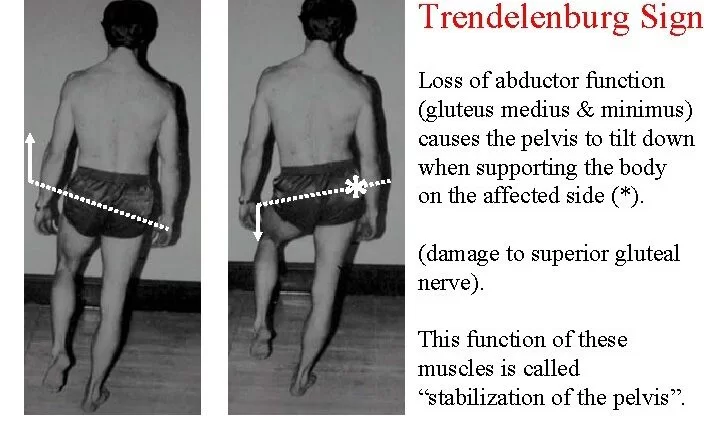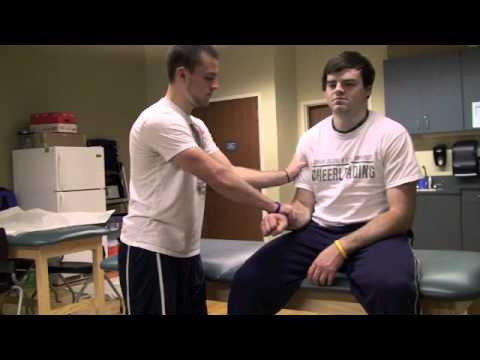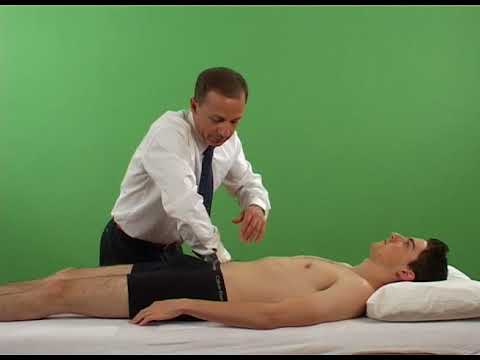Trendelenburg’s Sign
Trendelenburg’s sign is a physical examination test that can help the Physiotherapist to assess for any hip-related condition. This is also called the Trendelenburg test, However, it not be confused with the Brodie–Trendelenburg test which is used to determine the competency of the valves in the superficial and deep veins of patients with varicose veins.
A positive sign usually shows weakness in the hip abductor muscles mainly gluteus medius and gluteus minimus muscle. These findings can be associated with various hip abnormalities mainly congenital hip dislocation, rheumatic arthritis, and osteoarthritis.
The test is first described in 1895 by Friedrich Trendelenburg after which named the Trendelenburg Sign. Trendelenburg Sign helps to assess the Hip abductor’s muscle strength mainly the gluteus medius and gluteus minimus muscle.
Related Anatomy :
Gluteus medius and minimus are the main abductors of the hip, When you perform fully weight-bearing activity such as one leg standing, they act to abduct the femur away from the mid-line of the body and provide stability of the hip and pelvis.
Why and When Trendelenburg’s Sign is Required?
The main goal of the Trendelenburg Test helps to identify the weakness of the hip muscles mainly the abductors.
This identification of weakness in the hip abductors of standing on one leg, the Trendelenburg sign can also be used to assess other mechanical, neurological, or spinal disorders, such as the Congenital dislocation of the hip or hip subluxation.
When any patient complains of Hip pain with a lumping gait pattern to a doctor, Your therapist will instruct you to perform this test to differentiate conditions that affect the Hip joint or femur (mainly skeletal abnormalities) and Hip abductors (neuromuscular abnormalities).
How to do Trendelenburg’s Test?
To perform this test, Doctor asked you to stand on one leg for nearly 30 seconds without bending to one side, you should also require support if you have poor balance for precautionary measure. The doctor observes whether your pelvis is stable or not, during one leg standing position. If your Pelvis drops towards the opposite side during this test indicate a Positive test.
Trendelenburg Test Video :
Causes of Trendelenburg’s Sign positive
When anyone has Hip pain that affects the Hip joint and femur bone in which skeletal abnormalities are mostly found and Neuromuscular abnormalities in which Hip abductors muscles become weak.
Skeletal Abnormalities
Following are the skeletal abnormalities for which the Trendelenburg test is positive.
- Hip dysplasia in which spontaneous dislocation of the Hip is most common.
- Coxa vara where the angle between the femoral neck and femoral shaft is reduced by 120 degrees.
- Congenital Hip Dislocation/subluxation in which Hip stability is lost.
- Fracture around Greater Trochanter where Gluteal Medius and minimus muscle are inserted.
- Perthes Disease in which Femoral head necrosis is seen in Childhood.
- Hip osteoarthritis where Hip pain with crepitation is also the most common symptom.
Neuromuscular Abnormalities
- Superior gluteal nerve injury is most common after Hip replacement or related Injury.
- Low Back pain with Sciatica pain – where severe radiating pain causes weakness of Hip abductors.
- Poliomyelitis is where Hip abductor muscles become weak or Paralyzed.
- Muscular Dystrophy and other neuromuscular disease where Hip muscles become Paralyzed.
- Hip Abductors muscle tear or rupture due to injury. (eg. Gluteal muscle tendinitis)
FAQs
What is Trendelenburg sign?
Trendelenburg sign is a physical examination test performed when assessing for any dysfunction of the hip. A positive sign mostly shows weakness in the hip abductor muscles such as the gluteus medius and gluteus minimus muscle.
What does a positive Trendelenburg test indicate?
The pelvis drops towards the unsupported side when the Hip abductor’s muscle is weak. In case of more severe muscle weakness, the patient leans towards the affected side. This dropping of the pelvis in the standing position shows a positive Trendelenburg test.
What nerve is Trendelenburg sign?
Trendelenburg gait occurs mostly in the superior gluteal nerve damage, which supplies the Hip abductors muscle (Gluteal medius and Gluteal minimus). the superior gluteal nerve originates in the pelvis and ends in the gluteus minimus muscle. When the superior gluteal nerve is damaged, it’s hard for the affected side to support the body’s weight.
What does Trendelenburg’s negative mean?
When you are able to lift the hip of the leg, will also go up such as hiking of the hip or the pelvis tilts upwards Trendelenburg test is negative. When there is a drop of the hip or a downward tilt of the pelvis, the Trendelenburg test is positive.
Why is it called Trendelenburg?
This test is named after Friedrich Trendelenburg, a German surgeon, in Berlin at the end of the 19th century. Although modern research shows that it is also mentioned back to the 1st century BC,








3 Comments